How To Create A Brand Voice Through Content Marketing Strategy

In the competitive world of content marketing, having a strong brand voice is essential to stand out from the crowd. Your brand voice is more than just the tone and language you use; it represents the personality and values of your brand. It is the distinct voice that resonates with your target audience, building trust, and loyalty, and ultimately driving business success.
In this article, we will guide you through the steps to create a powerful brand voice that connects with your audience on a deeper level. We will explore how understanding your target audience, establishing your brand identity, communicating consistently across channels, and engaging with your audience can shape your brand voice. Additionally, we will discuss how to evolve and adapt your brand voice to stay relevant in a constantly changing market.
So if you are ready to know how to create a brand voice and unlock its potential, let’s dive in!
Understanding Your Target Audience
Defining your target audience is the first step to creating a powerful brand voice. To effectively connect with your audience, you need to understand their demographics, interests, and pain points. This knowledge allows you to tailor your content and messaging in a way that resonates with your target market.
Market research plays a crucial role in understanding your audience. By analyzing data and insights, you can gain valuable information about consumer preferences, behaviors, and trends. One example of a company that excels in market research is Coca-Cola. According to PDFAgile, they have developed a segmentation strategy that divides their audience into distinct groups based on factors such as age, lifestyle, and preferences. This allows Coca-Cola to create targeted campaigns that speak directly to each segment’s unique needs and desires.
Another tool to understand your audience is by creating buyer personas. Buyer personas are fictional representations of your ideal customers. They help you empathize with your audience and develop content that speaks directly to their specific pain points and challenges.
By defining your target audience, conducting thorough market research, and creating detailed buyer personas, you lay the foundation for understanding who you are speaking to. This knowledge enables you to tailor your brand voice in a way that captures attention, resonates with your audience’s needs, and ultimately drives business success.
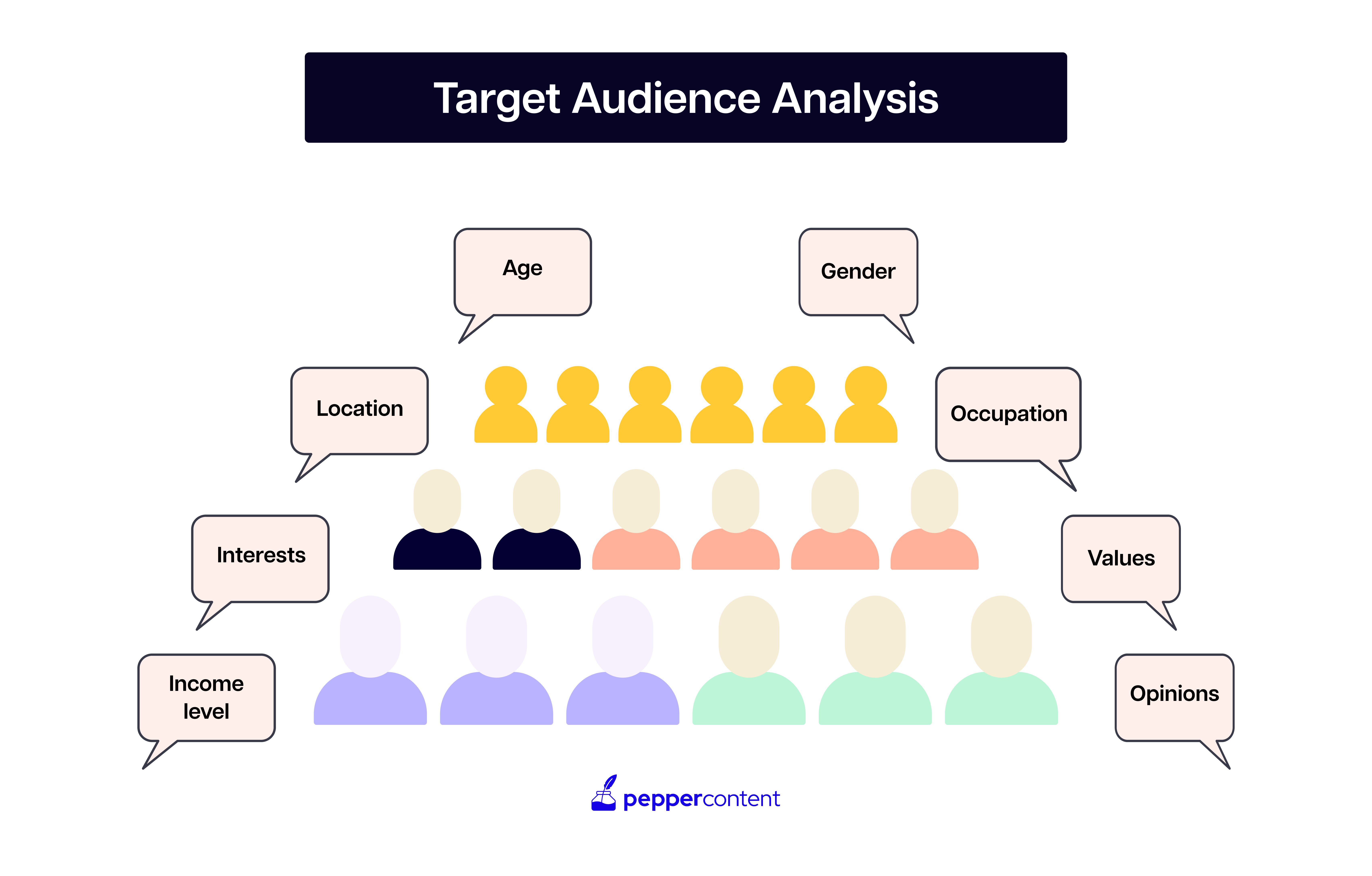
Establishing Your Brand Identity
A. Defining your brand values
In order to create a brand voice, it is essential to define your brand values. These are the guiding principles that shape your brand’s identity and influence how you communicate with your audience. Your brand values should align with the values of your target audience, as this fosters a sense of connection and authenticity.
For example, let’s consider a company that specializes in eco-friendly products. Their target audience is environmentally conscious individuals who value sustainability. In this case, their brand values may include environmental stewardship, ethical sourcing, and social responsibility. By clearly defining these values, the company can tailor their content to resonate with their target audience’s beliefs and priorities.
B. Crafting a mission statement
A mission statement is a concise summary of your brand’s purpose and aspirations. It communicates what your brand stands for and what it aims to achieve. Crafting a strong mission statement is crucial as it helps guide your content creation process and ensures consistency in messaging.
Take Google as an example. Their mission statement is “to organize the world’s information and make it universally accessible and useful.” This statement succinctly communicates its goal of providing access to information while highlighting its commitment to user-centricity.
C. Developing a unique selling proposition (USP)
Your unique selling proposition (USP) sets you apart from your competitors by highlighting what makes your brand unique or superior. It defines the value that you bring to your customers and forms an integral part of your brand identity.
Apple’s “Think Different” campaign exemplifies a powerful USP that helped shape its brand voice. By emphasizing innovation, and creativity, and challenging the status quo, Apple positioned itself as a leader in the tech industry. This USP informed not only their product development but also their content marketing strategy, enabling them to create a brand voice that resonated with their target audience.
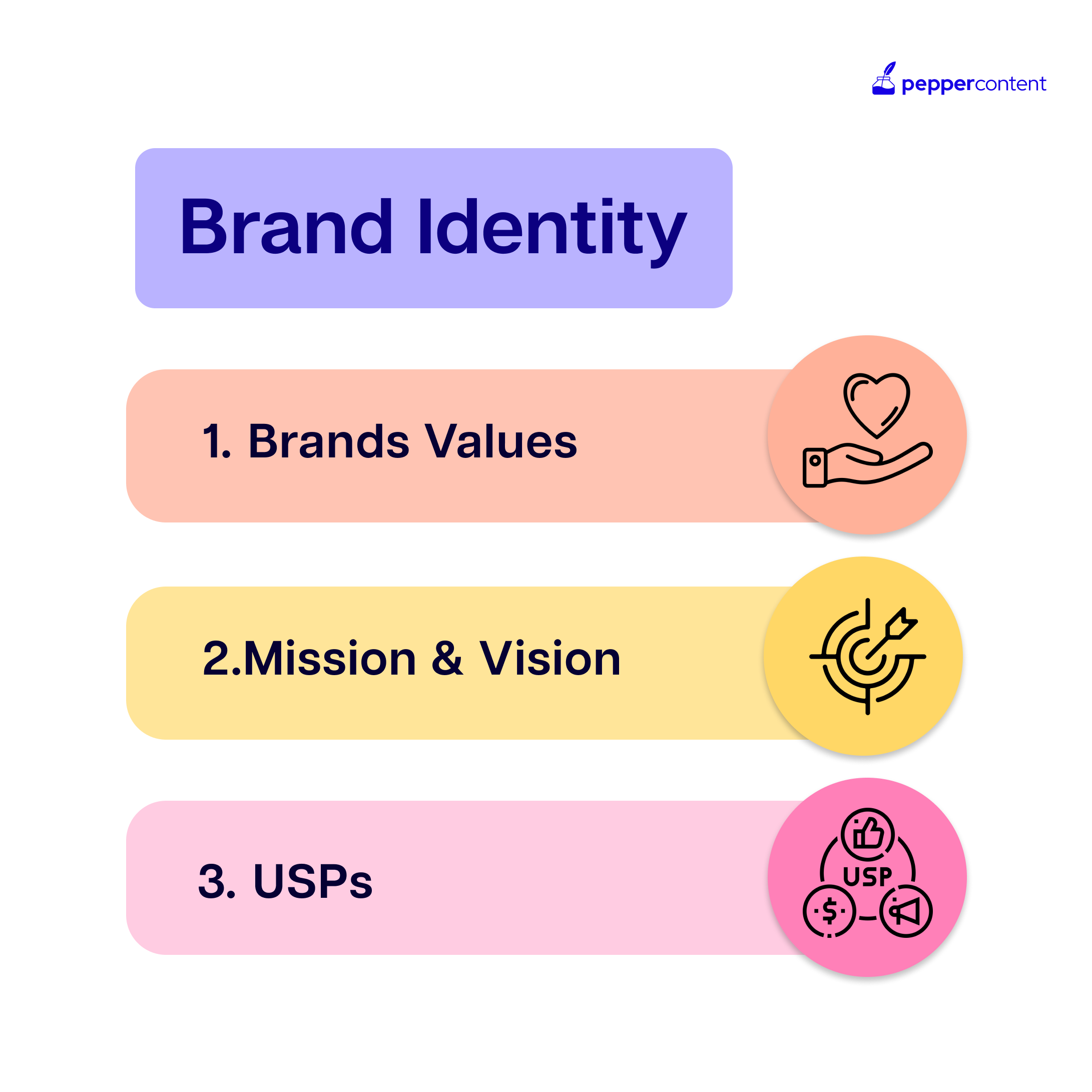
Communicating Consistently Across Channels
Choosing the appropriate tone and language
When it comes to how to create a brand voice, consistency is key. This means choosing the right tone and language that resonates with your target audience across all channels. Whether it’s your website, social media platforms, or email campaigns, your brand should speak in a consistent voice that reflects its values and personality.
One brand that excels in this aspect is Innocent Drinks. Known for its playful and humorous tone, Innocent Drinks has built a strong brand voice that engages and captivates its audience. Their social media posts are filled with witty puns and light-hearted humor, making them stand out among other beverage brands.
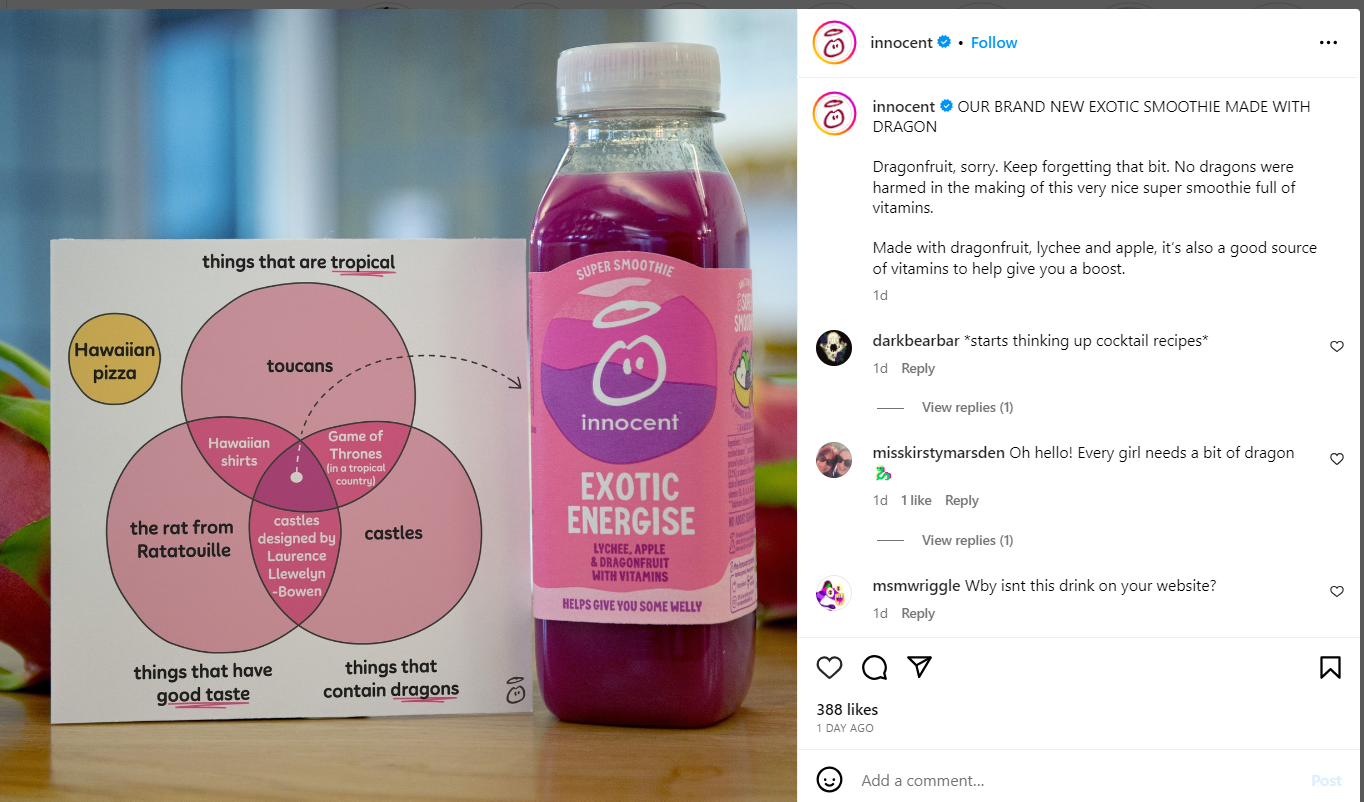
B. Creating style guidelines
Consistency goes beyond just tone and language; it also extends to visuals, fonts, colors, and other design elements. Creating style guidelines ensures that every piece of content you produce aligns with your brand identity.
For example, take a look at Starbucks. Their green logo and iconic mermaid symbol are instantly recognizable worldwide. Starbucks has gone a step further by incorporating these visual elements into its stores, packaging, and online presence. From their website to their Instagram feed, the use of consistent visuals creates a cohesive brand experience for customers.

C. Tailoring content for different platforms
While consistency is important, it’s also crucial to recognize that each platform has its own unique features and audience expectations. To effectively communicate your brand voice across different channels, you need to tailor your content accordingly.
Wendy’s is a prime example of a brand that adapts its voice to fit different platforms. Known for their sassy and witty Twitter responses, Wendy’s has mastered the art of crafting short, clever messages that resonate with its audience. However, they also understand that this tone may not work as well on other platforms like Facebook or email.
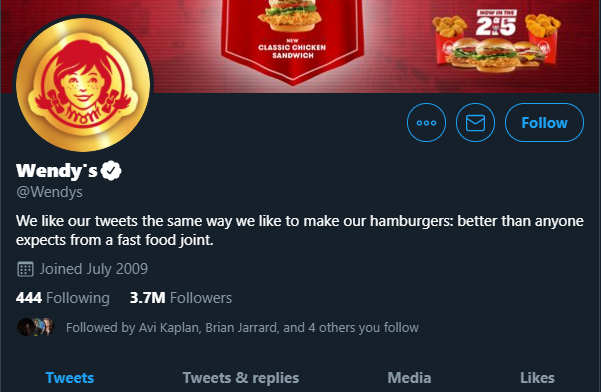
Engaging and Building Trust with Your Audience
A. Being authentic and relatable
When it comes to creating a powerful brand voice, authenticity is key. Consumers today are looking for brands that they can trust, relate to, and feel a connection with. One brand that has successfully showcased authenticity is Patagonia. Known for its commitment to environmental sustainability, Patagonia’s brand voice resonates with its audience by staying true to its values and purpose.
Through their content, Patagonia consistently shares stories about their efforts to protect the environment, from implementing sustainable practices in their supply chain to supporting grassroots environmental organizations. By openly discussing their challenges and victories, they build a sense of trust and credibility with their audience.

B. Incorporating storytelling into your content
Storytelling is a powerful tool that can evoke emotions and create a connection with your audience. When done effectively, storytelling can bring your brand voice to life and make it more memorable. Take the example of TOMS Shoes, a brand that has built its entire business around storytelling.
TOMS Shoes’ brand voice revolves around their mission of giving back. They tell stories of individuals whose lives have been positively impacted by their “One for One” model – for every pair of shoes purchased, TOMS donates a pair to someone in need. By sharing these personal narratives, TOMS Shoes creates an emotional connection with their audience and makes them feel like they are part of something bigger.

C. Encouraging customer feedback and interaction
Another way to engage your audience and build trust is by actively encouraging customer feedback and interaction. Starbucks does this exceptionally well through its “My Starbucks Idea” platform. This platform allows customers to share their thoughts, ideas, and suggestions directly with the company.
Starbucks takes this feedback seriously and has implemented various customer suggestions over the years, such as introducing new menu items or improving their mobile ordering experience. By involving customers in the decision-making process, Starbucks creates a sense of ownership and loyalty among its audience. This not only strengthens their brand voice but also helps them stay ahead of their competitors by consistently meeting customer needs.
Evolving and Adapting Your Brand Voice
To create a brand voice, it’s crucial to stay current with industry trends and adapt to changes in the market. This ensures that your brand voice remains relevant and resonates with your target audience. Here are some key strategies for evolving and adapting your brand voice:
Staying current with industry trends: This includes staying updated on new technologies, emerging platforms, and shifts in consumer behavior. By being aware of what’s happening in your industry, you can ensure that your brand voice remains fresh and engaging. For example, let’s consider a brand like Nike. Over the years, Nike has consistently adapted its brand voice to reflect the changing landscape of sports and fitness. They have embraced social media platforms like Instagram and TikTok to connect with younger audiences and have collaborated with influencers to stay relevant in the digital age.
Analyzing competitor strategies: Monitoring your competitors’ brand voice strategies can provide valuable insights into what is working and what isn’t. By analyzing their approach, you can identify gaps in the market or areas where you can differentiate yourself.
Monitoring and measuring brand voice effectiveness: It’s essential to track the impact of your brand voice on audience engagement and conversions. Utilize tools like Google Analytics or social media analytics to measure metrics such as website traffic, click-through rates, social media engagement, and conversions.
In conclusion, to create a brand voice, it is essential to create a successful content marketing strategy. By understanding your target audience, establishing your brand identity, communicating consistently across channels, engaging and building trust with your audience, and evolving and adapting your brand voice, you can create a strong and resonant connection with your customers.
Remember, the key to creating a brand voice, that too a powerful one, lies in continuous refinement and consistency. Monitor and measure the effectiveness of your brand voice using tools and metrics to ensure it is driving engagement and conversions. Stay current with industry trends and analyze competitor strategies to adapt and evolve your brand voice as needed.
With a well-crafted brand voice, you can captivate your audience and drive business success.
Introducing Pepper CMP
For a consistent and well-established brand voice, it is important to have a consistent and spot-on content process. Created especially for marketers facing such challenges, the all-new Pepper Content Marketing Platform is the place to empower businesses to scale content marketing efforts by marrying enterprise workflows, expert talent, and AI.
Most content tools work in isolation. Marketers subscribe to one tool for keyword research, sign into a marketplace to find the subject matter experts to actually create the content, use multiple spreadsheets to manage their editorial calendar and the content production process, and a plethora of other tools for analysis and more. Pepper’s Content Marketing Platform is home to the most efficient tools in the hands of a marketer. Instead of function-first, it is built with a workflow-first approach, keeping the marketer at the front and centre of its technology.
To know more, book a demo now!

Latest Blogs
Learn how to rank on AI search engines like ChatGPT, Perplexity, and Gemini by optimizing your content for authority, structure, and relevance. Stay ahead in AI-driven search with this strategic guide.
Explore the best healthcare SEO services for your medical practice. Improve online visibility and effectively reach more patients in need of your services.
Discover top social media agencies specializing in banking solutions, enhancing financial services and driving engagement.
Get your hands on the latest news!
Similar Posts

Content Strategy
5 mins read
Choosing The Best Healthcare Marketing Agency For Effective Content Solutions
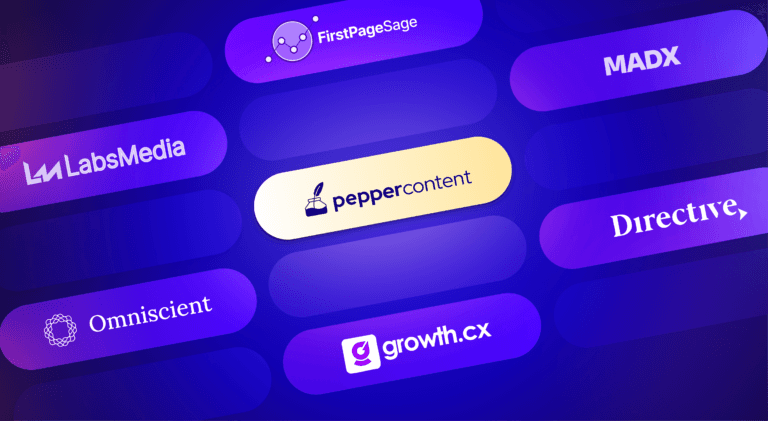
Content Marketing
4 mins read
Top 10 Agencies B2B SaaS Content Marketing for B2B Success

B2C Marketing
5 mins read